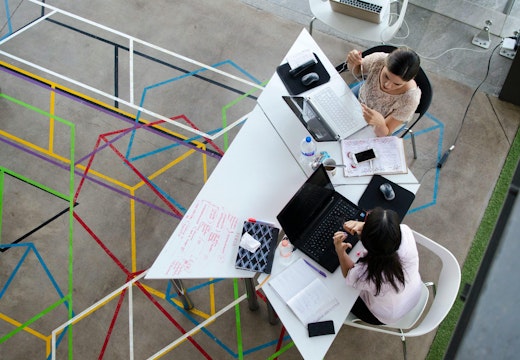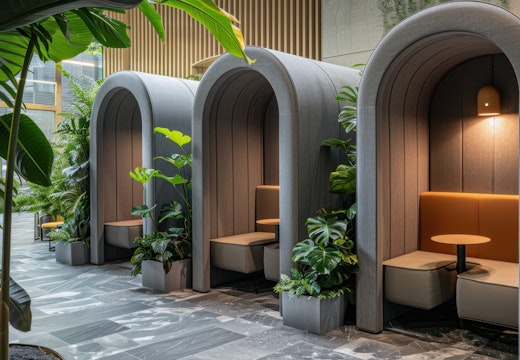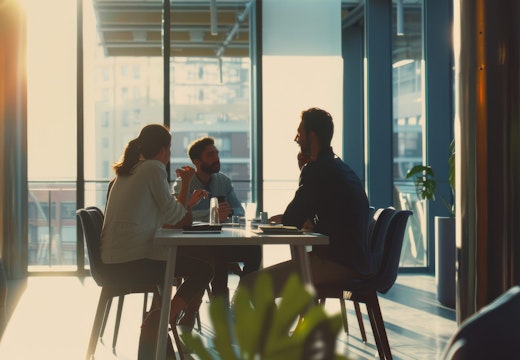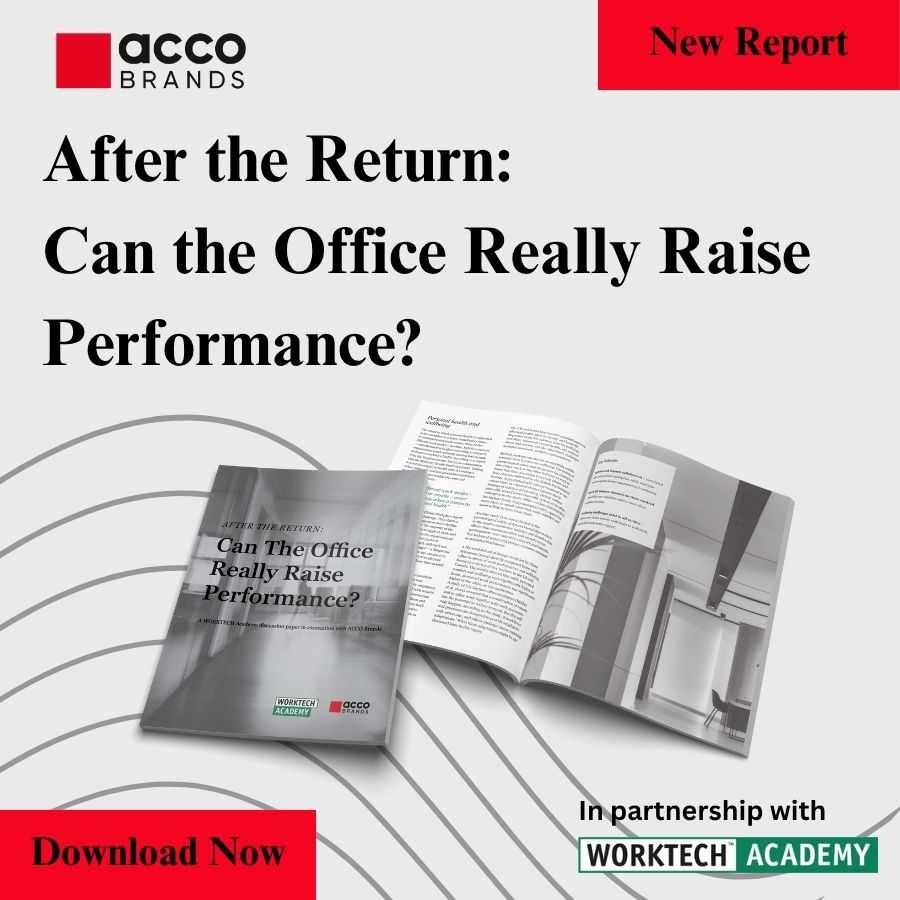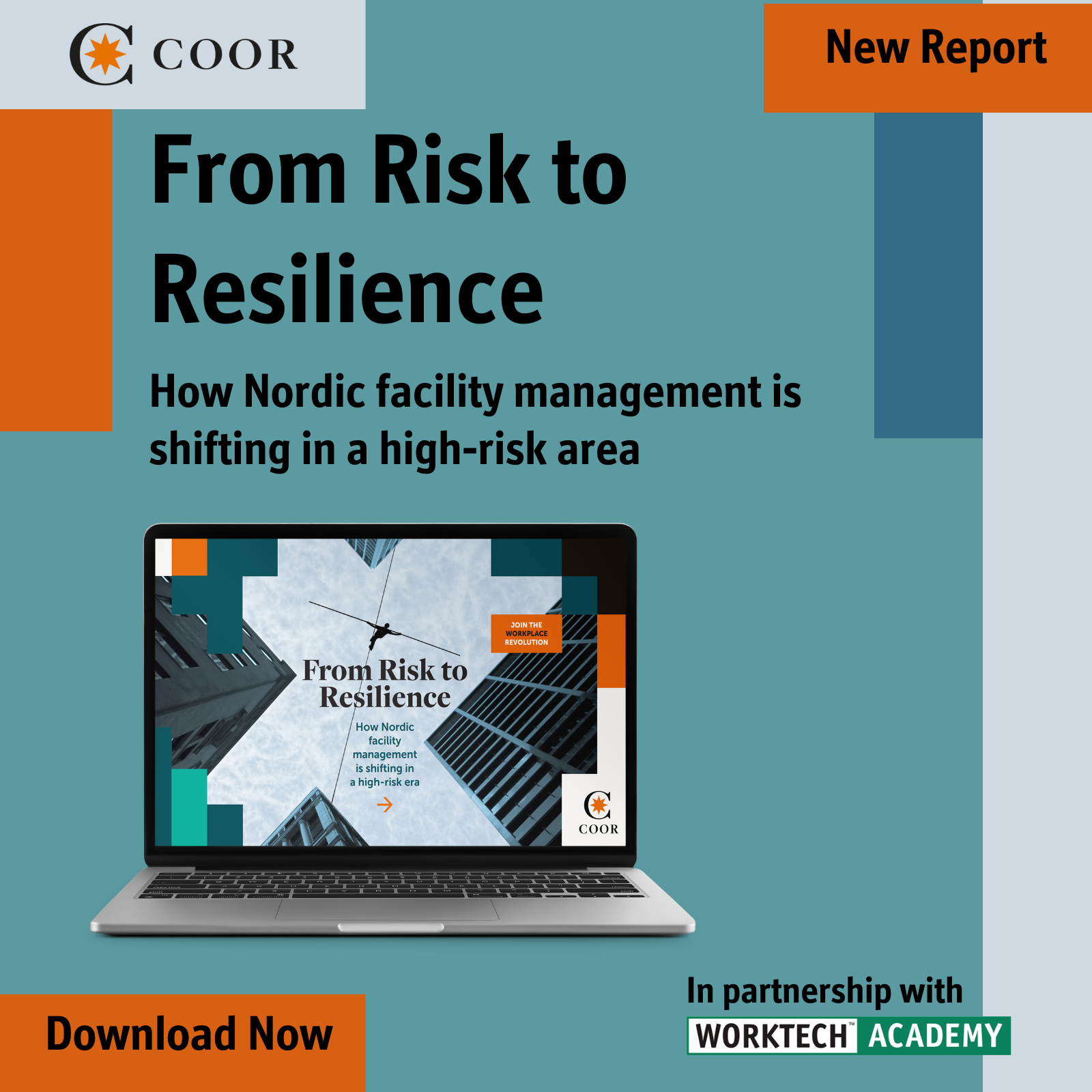Power of the pattern: a stressful view or a feelgood factor?
New research from the University of Cambridge suggests that repetitive patterns on building façades are raising our stress levels. But some patterns and shapes achieve the opposite effect
Visual patterns surround us, they cover the surfaces within which we live—they’re on walls and upholstery, and under our feet, just for starters. Neuroscientists have learned a lot about which patterns have desirable effects on what goes on in our brains, as well as which ones we should usually avoid.
Let’s start with the not-so-good: new research led by Cleo Valentine at the University of Cambridge (2025) has revealed that architectural façades with regularly spaced elements elicit the highest stress metrics in onlookers, particularly when combined with high contrast ratios and consistent repetition.
Vertical wooden slats and vertical metal screening elements produced the most pronounced indicators of visual stress in this groundbreaking study, while more varied geometric compositions demonstrated substantially lower stress metrics. In brief: the most stressful patterns to look at, when seen from their intended viewing distance, were vertical stripes with small spaces between them. To get a better idea of the conditions tested, visit the team’s open-source article here.
Visual stress
The Valentine-led team’s findings are consistent with those of Wilkens and associates (2018) – this research explored ‘a phenomenon known as “visual stress” induced by repetitive, geometric patterns around us. Geometric patterns, particularly patterns of stripes, can be uncomfortable to look at.’
However, Wilkens took pains to say that ‘We do not want to imply that stripes should be avoided at all costs. Using stripes to accentuate areas of danger might be highly beneficial.’ The study also offered helpful tips on how to reduce the negative impact of such patterns on the visual system, for example using thin grouting that contrasts little with the surround (thereby reducing the energy in the pattern), or by breaking the pattern up through mixing of different-sized tiles or bricks. Additional tips on designing to minimise visual stress are available in this article by Wilkins and colleagues.
Feelgood patterns
So, some patterns stress us. But seeing other sorts of patterns can make us feel good.
Symmetrical or asymmetrical: Humans prefer symmetrical things to asymmetry according to research by Gartus, Plasser, and Leder (2016), and Brielmann and Pelli (2018), and even have a preference for ‘meaningless abstract patterns’ (Leder and Tinio, 2014). Pecchinenda, Bertamini, Makin, and Ruta (2014) found that visual symmetry puts us in a good mood. Bajaj and Bond (2018) found that asymmetry in brand elements evokes excitement/arousal in observers, whereas visual symmetry was strongly associated with brand sophistication: ‘Luxury brands often adopt a classical style characterised by calmness, order, and idealism, in which symmetry is a fundamental characteristic.’
Moving beyond symmetry: As visual balance increases, so does preference according to research by Makin, Pecchinenda, and Bertamini (2012). Moderately complex patterns are generally preferred according to Berlyne (1971) and Forsythe, Nadal, Sheehy, Cela-Conde and Sawey (2011). Seeing favoured forms can boost mood, support better problem solving and creative thinking, and smooth our interactions with others, just for starters. Taylor and Spehar (2016) found that seeing moderately complex fractals, the sorts found in natural environments, lowers stress levels.
Curves over angles: Brielmann and Pelli (2018), quoted above regarding symmetry, also report that ‘Perhaps the most broadly established aesthetic preference is the one of curvature over angularity. People like the appearance of otherwise equivalent shapes and objects more if their contours are round rather than sharp and angular, and this is the case in various cultures across the globe.’ Liu, Bogicevic, and Mattila (2018) report that ‘circles suggest harmony and friendliness. Hard angles . . . have an association with competence, toughness and strength.’
Function and pleasure: Ghoshal and team (2016) found that functionality is linked to more angular lines, and pleasure and relaxation to more curved ones. Blazhenkova and Kumar (2018) learned people ‘associated curved shapes with sweet taste, quiet or calm sound, vanilla smell, green colour, smooth texture, relieved emotion, female gender. . . [and] associated angular shapes with sour taste, loud or dynamic sound, spicy or citrus smell, red color, rough texture, excited or surprise emotion, male gender.’ So, curves are tied to relaxation and angular forms to higher energy.
Read more of the latest research insights from Sally Augustin in Research Roundup, her regular column in the Innovation Zone for WORKTECH Academy members and partners here.
Read more on the University of Cambridge study ‘Visual Discomfort in the Built Environment’ in our Innovation Zone here.
Research sources
Aditi Bajaj and Samuel Bond. 2018. ‘Beyond Beauty: Design Symmetry and Brand Personality.’ Journal of Consumer Psychology, vol. 28, no. 1, pp. 77-98.
Daniel Berlyne. 1971. Aesthetics and Psychobiology. Appleton Century Crofts: East Norwalk, CT.
Olesya Blazhenkova and Melisa Kumar. 2018. ‘Angular Versus Curved Shapes: Correspondences and Emotional Processing.’ Perception, vol. 47, no. 1, pp. 67-89.
Aenne Brielmann and Denis Pelli. 2018. ‘Aesthetics.’ Current Biology, vol. 28, pp. R859-R863.
‘Curves or Angles? Shapes in Businesses Affect Customer Response.’ 2018. Press release, The Ohio State University.
A.Forsythe, M. Nadal, N. Sheehy, C. Cela-Conde, and M. Sawey. 2011. ‘Predicting Beauty: Fractal Dimension and Visual Complexity in Art.’ British Journal of Psychology, vol. 102, pp. 49-70.
Andreas Gartus, Helene Plasser, and Helmut Leder. 2016. ‘Individual Differences in Aesthetic Judgments of Symmetry.’ Proceedings IAEA [International Association of Empirical Aesthetics]. 2016 Vienna, August 29 – September 1, University of Vienna, p.27.
Tanuka Ghoshal, Peter Boatwright et al. 2016. ‘Curvature from All Angles: An Integrative Review and Implications for Product Design.’ In Rajeev Batra, Colleen Seifert, and Diann Brei (eds.), The Psychology of Design: Creating Consumer Appeal, Routledge: New York, pp. 91-106.
Helmut Leder and Pablo Tinio. 2014. “Experimental Aesthetics.” In Jon Lauring (ed.) An Introduction to Neuroaesthetics: The Neuroscientific Approach to Aesthetic Experience, Artistic Creativity, and Arts Appreciation. Tusculanum Press: Copenhagen, Denmark, pp. 51-69.
Alexis Makin, Anna Pecchinenda, and Marco Bertamini. 2012. ‘Implicitly Affective Evaluation of Visual Symmetry.” Emotion, vol. 12, no. 5, pp. 2012-1030.
Anna Pecchinenda, Marco Bertamini, Alexis Makin, and Nicole Ruta. 2014. ‘The Pleasantness of Visual Symmetry: Always, Never or Sometimes.’ PLoS ONE, vol. 9, no. 3.
Richard Taylor and Branka Spehar. 2016. ‘Fractal Fluency: An Intimate Relationship Between the Brain and Processing of Fractal Stimuli.’ In A. Di Ieva (ed.) The Fractal Geometry of the Brain, Springer: New York, pp. 485-496.
Cleo Valentine, Arnold Wilkins, Heather Mitcheltree, Oliver Penacchio, Bruce Beckles, and Ian Hosking. 2025. ‘Visual Discomfort in the Built Environment: Leveraging Generative AI and Computational Analysis to Evaluate Predicted Visual Stress in Architectural Façades.’ Buildings, vol. 15, no. 13
Wilkins, Olivier Penacchio, and Ute Leonards. 2018. ‘The Built Environment and Its Patterns: A View from the Vision Sciences.’ SDAR* Journal of Sustainable Design and Applied Research, vol. 6, no. 1, article 5.


